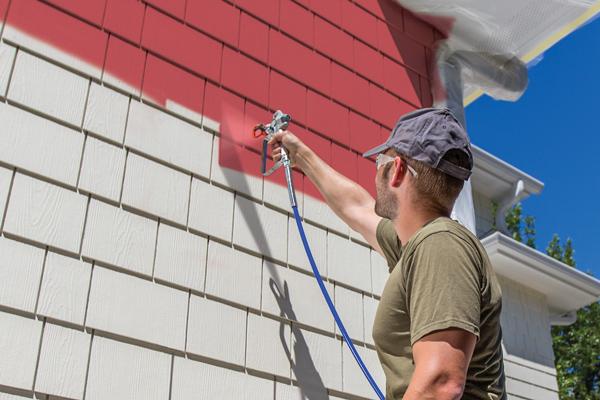The Truth About DIY Painting vs Hiring Professionals

Painting is one of the most common home improvement projects people attempt on their own. The idea is simple: buy some paint, grab a roller, and change the look of a room over a weekend. Many homeowners feel confident starting the job themselves, especially with the wide availability of online tutorials. On the other side, professional painters bring years of experience, specialized tools, and proven techniques. So which option is best for you—DIY or hiring a professional? The answer depends on your goals, your budget, the condition of your home, and how much time you are willing to invest. This guide breaks down the real differences, advantages, and challenges of both approaches.
The Appeal of DIY Painting
DIY painting often seems attractive because of cost savings. Buying paint and basic supplies is affordable compared to hiring a crew. Many homeowners feel confident they can handle the job. There is also the satisfaction of doing the work yourself, which can make the final result feel more personal.
Another advantage is flexibility. You can work at your own pace, paint a room at night after work, or spread the project over several weekends. DIY painting also allows you to make spontaneous decisions. If you want to try a new color or experiment with finishes, you can do so without worrying about changing a professional’s plan.
However, the ease of starting does not always match the ease of finishing. Many people underestimate the amount of work involved, especially the preparation stage.
The Real Challenges of DIY Work
DIY painting may look simple, but small details can make the difference between an average paint job and a polished, professional finish. One of the biggest challenges is preparation. Filling holes, sanding walls, taping edges, cleaning surfaces, and repairing damaged areas take more time than most people expect.
Another difficulty is technique. Getting clean lines, avoiding streaks, and applying even coats require practice. Beginners often press too hard with rollers or apply too much paint, leading to drips or uneven coverage. Ceiling lines are especially difficult without proper experience.
DIY projects also take longer. A room that professionals can complete in a few hours may take a homeowner several days. Mistakes may require repainting entire sections, adding more time and cost.
The Value Professionals Bring
Professional painters bring experience, training, and efficiency. They know how to prepare surfaces correctly, which products to use, and which tools will produce the best results. Professionals also understand how to handle complex areas such as high ceilings, stairwells, exterior trim, and surfaces with significant damage.
One of the biggest benefits is the quality of the finish. Professionals can produce clean edges, smooth walls, and consistent coats that last longer. They have access to commercial-grade tools like sprayers, heavy-duty ladders, and high-quality brushes that most homeowners do not own.
Time is another major advantage. A professional team can complete jobs quickly without sacrificing quality. They follow a clear process and work efficiently, which reduces disruption in your home.
Cost Comparison: DIY vs Professionals
Many homeowners assume DIY painting is always cheaper. While the initial cost is lower, the true expense depends on the size of the project and the condition of the home.
DIY costs include paint, brushes, rollers, trays, tape, drop cloths, sandpaper, repair materials, and sometimes ladder rentals. If mistakes occur, you may need more paint or replacement materials. If you need specialized tools, the cost increases quickly.
Professional painting costs more upfront because you are paying for labor, experience, and quality results. However, the work often lasts longer, reducing the need for frequent repainting. In many cases, professional painting becomes more cost-effective over time.
Quality and Longevity
Perhaps the most important difference is durability. Professional painters understand how to prepare surfaces so the paint adheres properly and lasts. They also know which products work best for specific conditions. The result is a finish that maintains its appearance longer.
DIY paint jobs often begin to show wear sooner, especially in high-traffic areas. Improper preparation can lead to peeling or uneven fading. Over time, the need for touch-ups and repairs may outweigh the initial savings.
Safety Considerations
Professional painters also understand safety. Exterior painting, high ceilings, and staircases require proper ladders, harnesses, and equipment. DIY painters sometimes take risks by standing on unstable surfaces or using makeshift tools. Professionals follow safety protocols and know how to work efficiently without unnecessary risk.
Complexity of the Project
Not all paint jobs are the same. Some projects are simple enough for most homeowners, such as painting a small bedroom after patching a few nail holes. Others require advanced knowledge.
Professional painters are especially valuable for projects involving:
• Water damage or mold
• Peeling or failing old paint
• Lead-based paint in older homes
• High or hard-to-reach areas
• Large-scale commercial spaces
• Textured surfaces or decorative finishes
• Cabinet refinishing
• Exterior work affected by weather
These tasks require skill, experience, and specialized tools that are difficult for homeowners to replicate.
Time Investment
Before doing a DIY paint job, consider your schedule. Painting is more time-consuming than most people expect. Preparation can take an entire day or more, depending on the room. Painting itself often involves two coats, drying time, cleanup, and careful detail work.
Hiring professionals frees up your time. They handle everything from preparation to cleanup, often completing a room or an entire house far faster than a homeowner can manage alone.
Finishing Touches
Professional painters are trained to notice details that untrained eyes may miss. They know how to create crisp lines, smooth corners, and even coverage in tricky spots. They also understand how different finishes affect light and texture. This produces a polished and consistent result.
DIY painters sometimes miss small imperfections that become noticeable once the paint dries.
When DIY Makes Sense
DIY is a good choice if:
• You enjoy hands-on projects
• You want to save money
• You are painting a small or simple room
• The walls are in good condition
• You have the time and patience to prepare correctly
With the right tools and careful effort, homeowners can achieve solid results on smaller interior projects.
When Hiring a Professional Is the Better Choice
Hiring a professional is the best option if:
• You want a long-lasting, flawless finish
• You are painting large or complex areas
• You do not have time for preparation
• The project involves exterior surfaces
• The home has damage or peeling paint
• You value efficiency and professional results
For many homeowners, the reliability and quality professionals bring make the investment worthwhile.
Final Thoughts
DIY painting and professional painting both have their place. The best choice depends on your goals, skill level, schedule, and the complexity of the project. Some homeowners enjoy painting and take pride in doing it themselves. Others prefer the security and craftsmanship that comes from hiring experienced painters.
Whatever path you choose, understanding the true differences helps you make an informed decision that results in a beautiful, long-lasting finish for your home.
- AI
- Vitamins
- Health
- Admin/office jobs
- News
- Art
- Causes
- Crafts
- Dance
- Drinks
- Film
- Fitness
- Food
- Giochi
- Gardening
- Health
- Home
- Literature
- Music
- Networking
- Altre informazioni
- Party
- Religion
- Shopping
- Sports
- Theater
- Wellness


